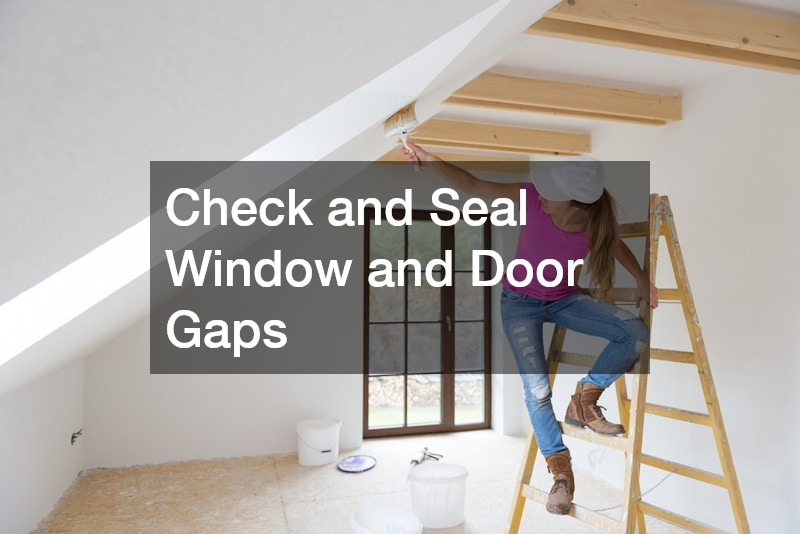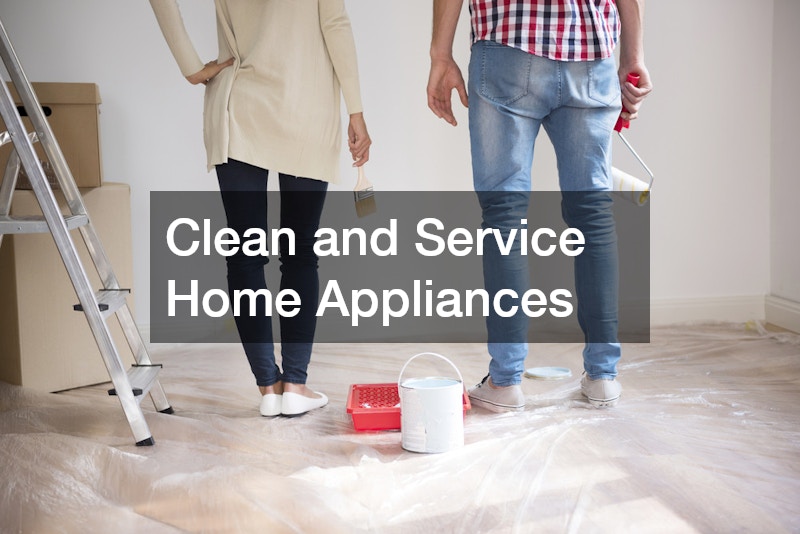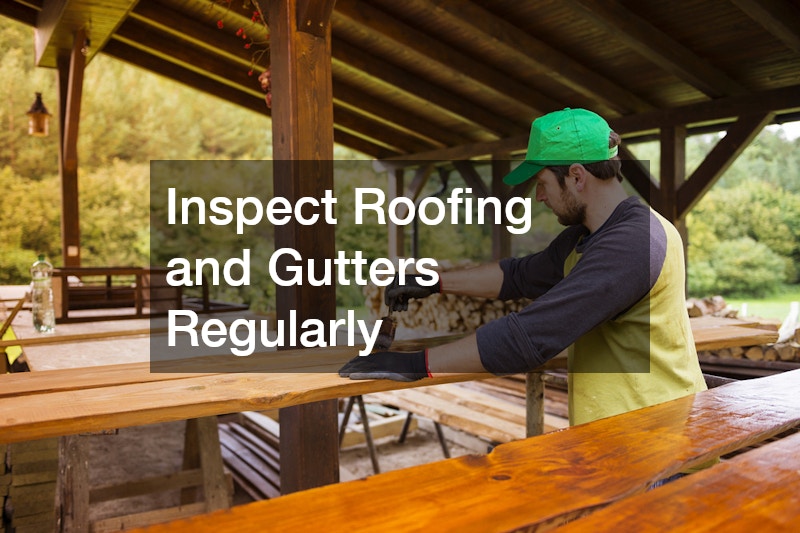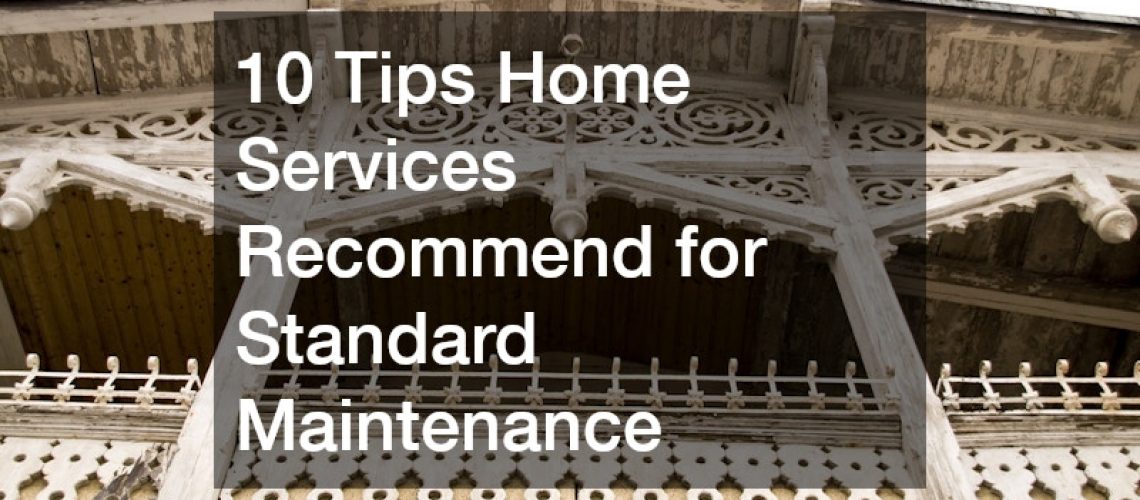Maintaining The Condition of Your Home
Maintaining a home can be a challenging but essential responsibility for every homeowner. Regular upkeep ensures the longevity of your property and prevents costly repairs down the road. Standard maintenance routines address everything from structural integrity to everyday wear and tear, ensuring your home remains a safe and comfortable environment. Whether you’re a new homeowner or have been in the same house for years, adopting a proactive approach to maintenance is key to protecting your investment and avoiding unnecessary expenses.
A well-maintained home not only looks better but also functions more efficiently. Tasks like cleaning, inspecting, and repairing various components of your home may seem minor, but when performed regularly, they can significantly enhance the value and livability of your space. Standard maintenance also allows you to identify and address small issues before they escalate into costly repairs. This blog explores ten practical tips home services recommend to help you stay on top of essential maintenance tasks. From routine cleaning to specialized professional services, these strategies will help you preserve the functionality and aesthetics of your home for years to come.

1. Establish a Regular Cleaning Schedule
A clean home is more than just visually appealing—it contributes to a healthier and more functional living space. Dust, debris, and grime can accumulate in overlooked areas, leading to long-term damage, poor air quality, or even pest infestations. Standard maintenance involves creating a cleaning routine that includes every part of your home, from frequently used areas like kitchens and bathrooms to less obvious spaces such as attics, basements, and garages. Regular cleaning not only keeps your home looking pristine but also gives you the opportunity to spot potential problems, like leaks or mold, before they worsen. Developing a habit of consistent cleaning ensures that your home remains a welcoming and safe environment for everyone.
When planning your cleaning schedule, it’s crucial to include tasks that are often forgotten yet vital to the safety and functionality of your home, like chimney sweeping. Over time, soot and creosote can build up in chimneys, creating fire hazards or blocking proper ventilation. Scheduling an annual chimney sweeping not only ensures your fireplace functions safely but also contributes to better indoor air quality, especially during colder months when fireplaces are used more frequently. Incorporating these often-overlooked tasks into your standard maintenance routine prevents avoidable hazards and provides peace of mind, knowing that your home is safe and well-maintained.
2. Inspect and Maintain HVAC Systems
Your HVAC system plays a vital role in maintaining a comfortable and energy-efficient home, but it requires consistent care to function at its best. Heating and cooling systems often face strain due to seasonal changes, and without regular attention, they can develop issues like clogged filters, refrigerant leaks, or worn-out components. Standard maintenance for HVAC systems includes biannual inspections to ensure optimal performance. These inspections reduce energy consumption, extend the system’s lifespan, and prevent sudden breakdowns that could leave your home unbearably hot or cold during extreme weather. Simple tasks like cleaning vents and replacing filters are easy ways to support the system’s efficiency while maintaining indoor air quality.
For more complex issues or upgrades, it’s beneficial to consult a general contractor to assess your system and make necessary adjustments. A professional can inspect your ductwork, calibrate thermostats, and evaluate the overall health of your HVAC system, providing solutions that align with standard maintenance practices. This ensures your system is running efficiently year-round, saving you money on energy bills and avoiding costly repairs. Combining routine personal upkeep with professional services creates a well-rounded maintenance plan that guarantees a comfortable and energy-efficient living environment for years to come.

3. Check and Seal Window and Door Gaps
Windows and doors are essential to your home’s insulation and energy efficiency, but they can easily develop gaps or cracks over time due to natural wear and environmental factors. These gaps allow drafts to enter, causing your HVAC system to work harder to maintain a consistent temperature. As part of standard maintenance, inspecting your windows and doors at least twice a year for any signs of damage, such as cracked caulking or warped frames, can prevent energy loss and improve your home’s comfort. Addressing these issues early helps to maintain the structural integrity of your home while also reducing heating and cooling costs.
For a more thorough approach, focus on sealing and repairing any gaps with caulk, weatherstripping, or even replacing worn-out hardware. Additionally, you might consider consulting with a residential roofer to ensure that the window and door frames integrate seamlessly with the rest of your home’s structure. This is particularly important in areas where water damage could occur, such as near roof overhangs or poorly drained exterior walls. Paying close attention to these details as part of your standard maintenance plan not only enhances energy efficiency but also ensures that your home remains protected from the elements, preventing larger problems down the road.
4. Perform Routine Plumbing Inspections
The plumbing system is one of the most vital yet vulnerable parts of your home, and regular inspections are essential to keeping it functioning efficiently. Issues like small leaks, clogged drains, or low water pressure might seem minor but can escalate into costly repairs if left unaddressed. Standard maintenance includes periodically checking all visible pipes, faucets, and fixtures for any signs of wear, rust, or dripping water. These routine checks help you identify and resolve problems before they cause water damage or increase your utility bills. Inspect less visible areas such as under sinks, behind appliances, or in basements to catch hidden issues.
For a more comprehensive inspection, consider the health of your home’s septic system, which plays a crucial role in waste management. Scheduling regular septic pumping can prevent backups and ensure your system operates smoothly. A professional inspection might also reveal deeper plumbing issues that require expert attention. Including septic maintenance as part of your standard maintenance routine protects your home from unpleasant surprises and maintains a reliable plumbing system that supports your daily needs without disruption.

5. Clean and Service Home Appliances
Home appliances are indispensable for modern living, but they often endure significant wear and tear from daily use. Neglecting their maintenance can lead to reduced efficiency, higher energy bills, or even sudden breakdowns. Standard maintenance involves cleaning appliances like refrigerators, ovens, washing machines, and dishwashers to ensure they remain in optimal condition. For example, cleaning refrigerator coils can improve energy efficiency, while routinely inspecting washing machine hoses prevents potential leaks. Regularly maintaining your appliances not only extends their lifespan but also reduces the risk of fire hazards or water damage caused by neglected components.
Proper disposal of waste materials, especially during appliance upgrades or repairs, is another critical aspect of appliance care. For instance, partnering with a local dumpster service when replacing old or broken appliances can help ensure safe and environmentally friendly disposal. This approach keeps your home organized while adhering to standard maintenance principles. By cleaning, inspecting, and responsibly disposing of appliances as needed, you create a well-functioning, safe, and sustainable household environment.
6. Examine and Replace Air Filters
Air filters are essential for maintaining the quality of the air inside your home and ensuring that your HVAC system operates efficiently. Over time, these filters accumulate dust, pet dander, and other airborne particles, which can clog the system and reduce airflow. Neglecting this part of standard maintenance can lead to increased energy consumption, higher utility bills, and even health problems due to poor indoor air quality. Checking your air filters every month and replacing them every one to three months, depending on usage, is a simple yet impactful way to keep your home comfortable and healthy.
For homes with specialized flooring, such as carpets or hardwood, maintaining clean air filters becomes even more crucial. Dust and debris from flooring can circulate through your HVAC system, emphasizing the importance of frequent filter replacement. If you’ve recently completed any renovations or flooring services, the need for clean air filters is even greater to manage construction dust. As part of a standard maintenance routine, examining and replacing air filters not only keeps your HVAC system running efficiently but also ensures that every breath you take at home is fresh and clean.

7. Inspect Roofing and Gutters Regularly
Your roof and gutters are your home’s first line of defense against the elements, making their maintenance critical to protecting your property. Over time, harsh weather conditions like rain, wind, and snow can cause wear and tear, leading to issues such as missing shingles, leaks, or sagging gutters. As part of standard maintenance, inspecting your roof and gutters at least twice a year—ideally in the spring and fall—helps you catch problems early and prevent more extensive damage. Keeping gutters free of debris like leaves and twigs ensures proper water drainage, which protects your home’s foundation and landscaping.
Partnering with a roofing contractor for a professional inspection can provide a deeper understanding of your roof’s condition. They can identify hidden issues such as cracked flashing, loose shingles, or small leaks that might not be visible during a general inspection. Regular gutter maintenance and roof inspections are particularly important in areas prone to heavy rain or snow, as neglecting these systems can lead to costly repairs or water damage. Including these tasks in your standard maintenance routine ensures your home remains weatherproof, safe, and in excellent condition for years to come.
8. Maintain Yard and Landscaping Areas
Your yard and landscaping significantly impact your home’s appearance and functionality, but they also require consistent upkeep. Standard maintenance includes mowing the lawn, trimming trees, and managing plant growth to prevent overgrowth or damage to structures. Regular yard care not only enhances curb appeal but also helps maintain drainage and reduces pest infestations.
An erosion control service can be invaluable for properties prone to soil erosion or uneven terrain. By stabilizing slopes and ensuring proper drainage, these professionals help protect your yard and the foundation of your home. Consistently maintaining your outdoor areas ensures they remain both beautiful and functional while preventing potential damage to your property.
9. Test Smoke and Carbon Monoxide Detectors
Smoke and carbon monoxide detectors are critical safety devices that require regular attention to ensure they function properly. As part of standard maintenance, test your detectors at least once a month and replace their batteries annually, or sooner if the low-battery alarm sounds. These devices are your first line of defense against fire or harmful gas exposure, making their upkeep essential for a safe home.
Additionally, inspecting these devices for proper placement is vital. For homes seeking a concrete foundation company, they can help ensure that detectors are evenly distributed across living areas and bedrooms is especially important. Regular testing and maintenance of your smoke and carbon monoxide detectors provide peace of mind and ensure the safety of everyone in your household.
10. Schedule Professional Home Maintenance Services
While many maintenance tasks can be handled independently, some aspects of home care require professional expertise. Scheduling routine inspections and services by qualified professionals ensures that no issues go unnoticed. From plumbing to roofing, standard maintenance that includes expert evaluation helps prevent costly emergencies and prolongs the life of your home’s systems.
Engaging a concrete service, for example, can address cracks or wear in your foundation and walkways, ensuring long-term stability. Professionals can also provide specialized care for areas like your HVAC system, electrical wiring, or water management solutions. By integrating professional services into your maintenance plan, you maintain a well-rounded approach to home care, safeguarding your property’s value and functionality.
Implementing New Recommended Strategies
Maintaining your home is an ongoing responsibility that requires attention to detail and a proactive mindset. By following these ten tips, you can create a comprehensive standard maintenance plan that addresses every aspect of your home, from interior systems to exterior features. Consistent care not only preserves the aesthetic appeal of your property but also ensures its structural integrity and safety.
Whether it’s scheduling professional services, like chimney sweeping or erosion control, or tackling tasks such as inspecting air filters and testing detectors, every effort contributes to the overall well-being of your home. By prioritizing standard maintenance, you protect your investment and create a safe, comfortable space for years to come.





